
Coamo is a town and municipality founded in 1579 in the south-central region of Puerto Rico, located north of Santa Isabel; south of Orocovis and Barranquitas; east of Villalba and Juana Díaz; and west of Aibonito and Salinas. The municipality of Coamo is spread over 10 barrios and Coamo Pueblo – the town or downtown area and administrative center of the city. The Coamo municipality is also a Micropolitan Statistical Area and as such is part of the Ponce-Yauco-Coamo Combined Statistical Area.
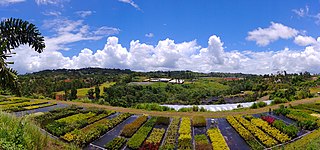
Barranquitas is a small mountain town and municipality located in the Cordillera Central region of Puerto Rico, south of Corozal and Naranjito; north of Coamo and Aibonito; west of Comerío and Cidra; and east of Orocovis. Barranquitas is spread over 6 barrios and Barranquitas Pueblo. It is part of the San Juan-Caguas-Guaynabo Metropolitan Statistical Area.

Corozal is a town and municipality of Puerto Rico located in the central-eastern region, north of Orocovis and Barranquitas; south of Vega Alta; southwest of Toa Alta; east of Morovis and Orocovis; and west of Naranjito. Corozal is spread over 12 barrios and Corozal Pueblo. It is part of the San Juan-Caguas-Guaynabo Metropolitan Statistical Area.
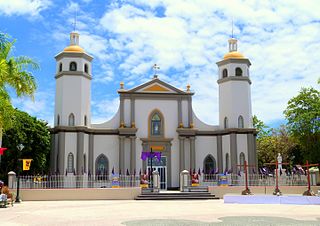
Juana Díaz is a town and municipality of Puerto Rico located on the southern coast of the island, south of Jayuya, Ciales, Orocovis and Villalba; east of Ponce; and west of Coamo and Santa Isabel and the Caribbean Sea to the south. Juana Díaz is spread over 13 barrios and Juana Diaz Pueblo. It is part of the Ponce Metropolitan Statistical Area.

Morovis is a town and municipality of Puerto Rico located in the central region of the island, north of Orocovis, south of Manatí, Vega Baja and Vega Alta; east of Ciales, and west of Corozal. Morovis is spread over 13 barrios and Morovis Pueblo. It is part of the San Juan-Caguas-Guaynabo Metropolitan Statistical Area.

Villalba, originally known as Villa Alba, is a town and municipality of Puerto Rico located in the central region, northeast of Juana Díaz; south of Orocovis; and west of Coamo. Villalba is spread over 6 barrios and Villalba Pueblo. It is part of the Ponce Metropolitan Statistical Area.
Orocobix was the principal regional Taíno Cacique (chief) of the central mountain region of Puerto Rico called Jatibonicu in the 16th century. The Jatibonicu territorial region covered the present day municipalities of Aibonito, Orocovis, Barranquitas, Morovis and Corozal. The Taíno language name Orocobix or O-roco-bis literally means: 'Remembrance of the First Great Mountain.'
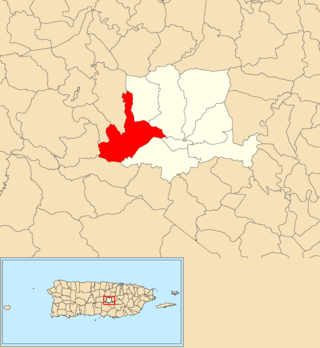
Palo Hincado is a barrio in the municipality of Barranquitas, Puerto Rico. Its population in 2010 was 4,587.

Barrio Pueblo is a barrio and the administrative center (seat) of Orocovis, a municipality of Puerto Rico. Its population in 2010 was 682.

Pasto is a barrio in the municipality of Morovis, Puerto Rico. Pasto has about 8 sectors and its population in 2010 was 767.

Río Grande is a barrio in the municipality of Morovis, Puerto Rico. Río Grande has six sectors and its population in 2010 was 594.
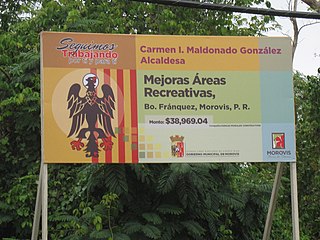
Fránquez is a barrio in the municipality of Morovis, Puerto Rico. Fránquez has twelve sectors and its population in 2010 was 4,583.
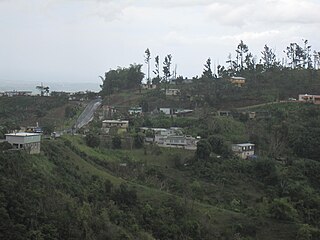
Perchas is a barrio in the municipality of Morovis, Puerto Rico. Perchas has about 11 sectors and its population in 2010 was 1,336.

Barros is a barrio in the municipality of Orocovis, Puerto Rico. Its population in 2010 was 1,917.

Bauta Abajo is a barrio in the municipality of Orocovis, Puerto Rico. Its population in 2010 was 1,516.

Orocovis is a barrio in the municipality of Orocovis, Puerto Rico. Its population in 2010 was 3,658.

Ala de la Piedra is a barrio in the municipality of Orocovis, Puerto Rico. Its population in 2010 was 419.
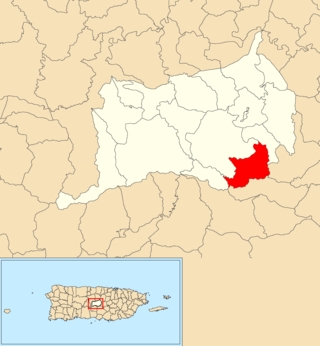
Bauta Arriba is a barrio in the municipality of Orocovis, Puerto Rico. Its population in 2010 was 913.

























